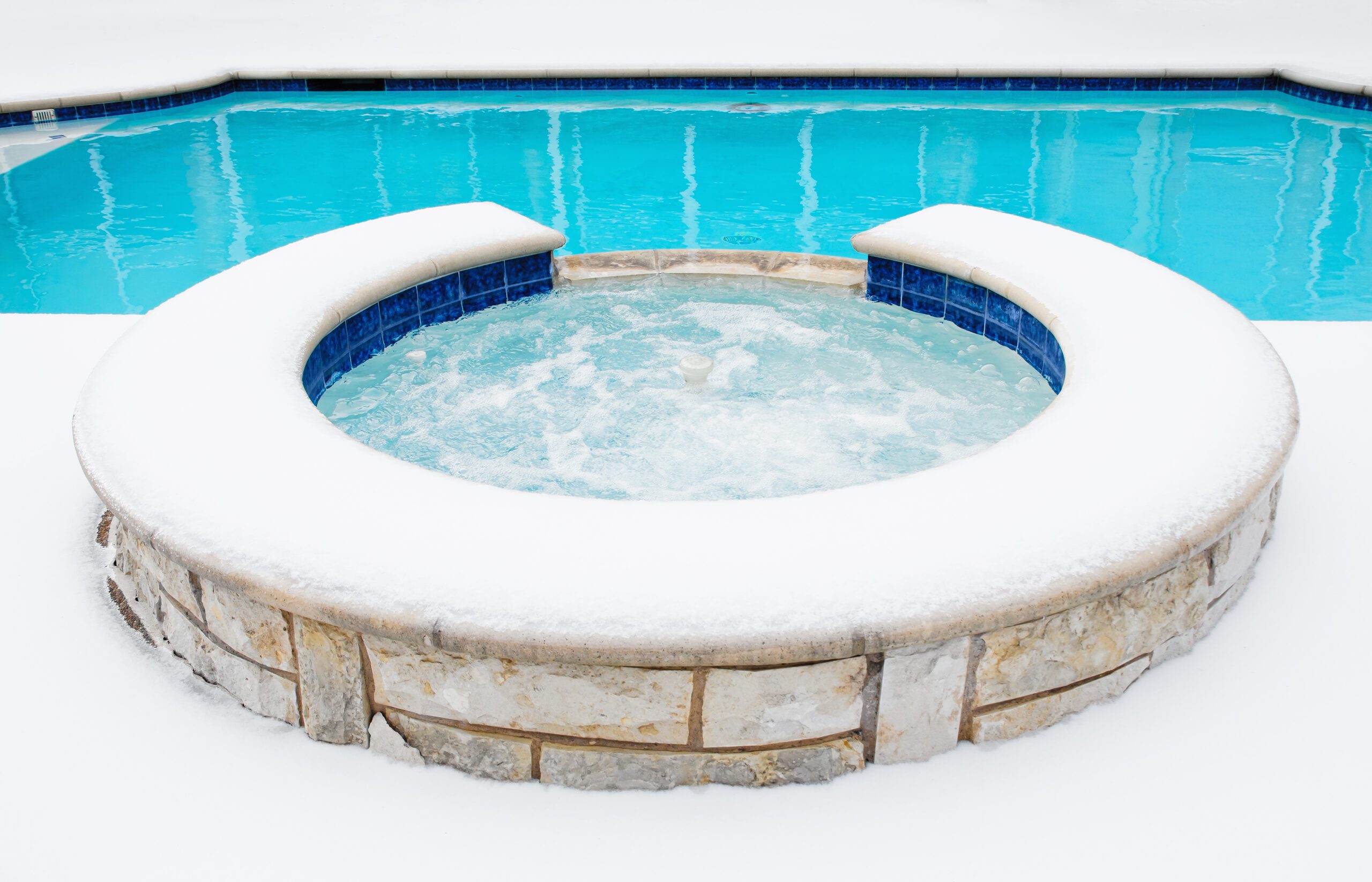
Want to learn more about algaecide? Read on to find out when to add algaecide to your pool maintenance routine and other helpful tips.
Hot tubs and spas are a great luxury to have as a home owner. Almost nothing is more relaxing after a long day than soaking up in your hot tub with some friends. With this being said, the temperature of the water you soak in is incredibly important. Today on Pool Calculator we are writing a mini-blog post on the ideal temperature of your hot tub. We’ll discuss the ideal range, and how you can find the perfect temperature for you and those who will be enjoying the luxury.
For more articles on hot tubs and spas, click here

While there is no “too low” temperature setting for a hot tub. Most people have their own personal setting. The “ideal” temperature range for most spas is from 100-102°F. This makes sure you stay warm and relaxed, but don’t overheat your body. The recommended maximum temperature for hot tubs is around 104°F. At any temperature at or over that level your body will overheat quickly. There are numerous health risks associated an overheating body.
We at Pool Calculator recommend that you begin with setting your temperature around 99°F (right over your body’s normal temperature). From here, slowly raise the temperature until you find the ideal number for you.
Like previously stated, starting low (around 98-99°F) and raising slowly is a great way to find your ideal temperature. This way you can experiment with different temperatures without putting your body at risk of overheating.
Another recommendation we have is to test your spa water with friends or family. This way you can account for all of the people who will use the spa. This is because we all have different tolerance levels as humans. Some people may be able to “handle” higher temperatures than others will. For instance, smaller children and women who are pregnant will not be able to handle higher temperatures. Factors like this will also need to be taken into consideration.
Reminder: Most hot tub sessions should be limited to 15-30-minute intervals. This can be extended to 45 minutes to an hour at lower temperatures. This is to make sure you don’t overheat or raise your body temperature to an unsafe level.
Hot tub temperatures at or exceeding 104°F are associated with many health risks. These risks are associated with “hyperthermia” (the opposite of hypothermia), or a body temperature that is too high. Again, the higher the temperature setting on your spa means you should spend a shorter amount of time in the water.
These hyperthermic health risks include skin rashes, heat stroke, cramps, and overall exhaustion due to excessive heat. Also, you must factor alcohol into your spa temperature decision. Alcohol dehydrates your body and can increase the risk for these side effects. So, if you’re going to be drinking, we recommend setting your temperature 1 or 2 degrees colder than if you are not (but alcohol is statistically shown to make every pool party better).
Overall, balancing the relaxation of you and your loved ones with the safety of everyone is key to an exceptional experience with your hot tub. Keep this in mind when you are setting your hot tub temperature.
To use our Pool Calculator for your pool or hot tub, click here.
See our buyer’s guide on hot tubs and spas.

Want to learn more about algaecide? Read on to find out when to add algaecide to your pool maintenance routine and other helpful tips.

In this quick guide, we’ll answer the question “can you over shock a pool” and unveil the factors to consider when shocking a pool.

Maintaining both pH and total alkalinity in your swimming pool is important for keeping your pool properly sanitized and non-corrosive. Total alkalinity is to pH what cyanuric acid is to free chlorine. Total alkalinity stabilizes pH levels. The ideal pool pH level is 7.4 to 7.6. The ideal total alkalinity level is 80 to 120 ppm.

The Association of Pool and Spa Professionals recommends free chlorine levels for both swimming pools and hot tubs be kept between 2.0 and 4.0 ppm. However, the Center for Disease Control recommends free chlorine stay above 1 ppm in pools and 3 ppm in hot tubs.